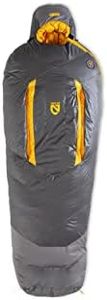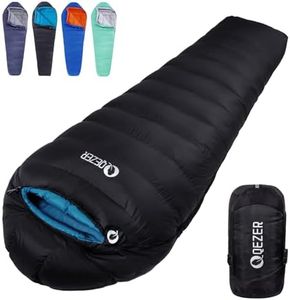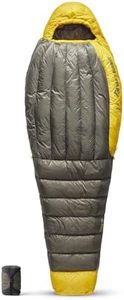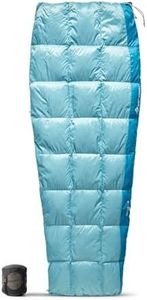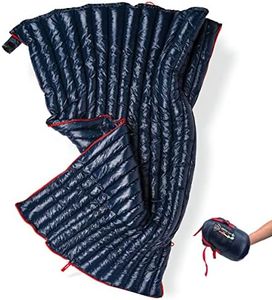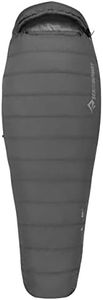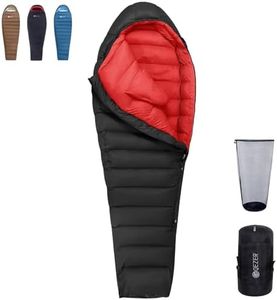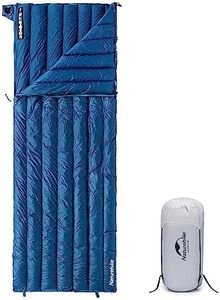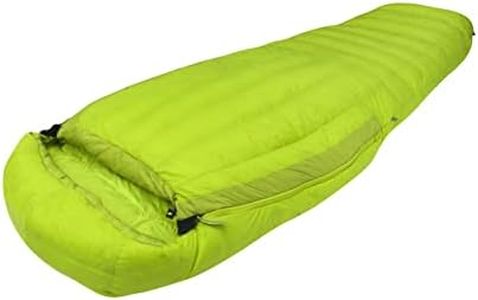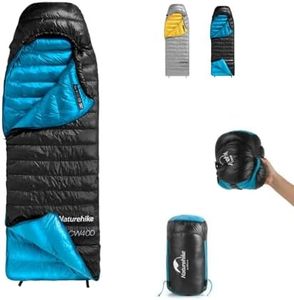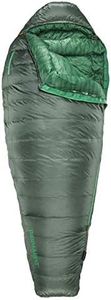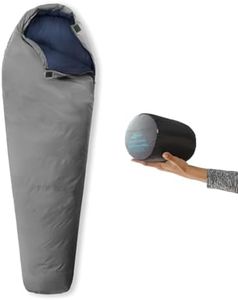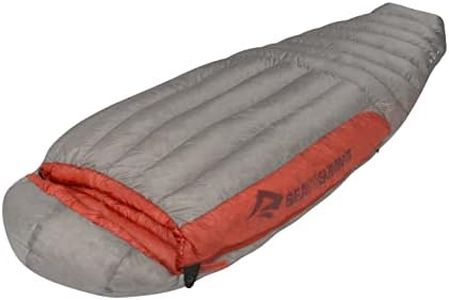We Use CookiesWe use cookies to enhance the security, performance,
functionality and for analytical and promotional activities. By continuing to browse this site you
are agreeing to our privacy policy
10 Best Budget Down Sleeping Bag
From leading brands and best sellers available on the web.Buying Guide for the Best Budget Down Sleeping Bag
Buying a down sleeping bag can be a bit overwhelming, but understanding what really matters will help you get the best fit for your needs. Focus on how and where you’ll use the sleeping bag: Are you a casual camper, a serious backpacker, or someone who camps in cold climates? Key specs will guide your choice to ensure you stay warm, comfortable, and get good value out of your bag. Take your personal comfort level and the conditions you expect into account when making a decision.Temperature RatingThe temperature rating tells you the lowest temperature at which the sleeping bag is designed to keep you warm. This is important because it helps you match the bag to the conditions you expect. Ratings generally fall into summer (above 35°F/1.6°C), 3-season (20–35°F/-6 to 1.6°C), and winter (20°F/-6°C and below). If you tend to get cold at night or plan to camp in chillier weather, choose a bag with a lower temperature rating than you might expect. For milder conditions, a higher rating will suffice and may save weight and space.
Down Fill PowerFill power measures how much warmth the down can provide relative to its weight—the higher the fill power number, the warmer and loftier the sleeping bag will be for a given weight. Budget sleeping bags often have a fill power in the 550–650 range, which is great for regular camping and occasional backpacking. Higher numbers, like 700 and above, are lighter and pack smaller, but usually cost more. For most casual users, 550–650 offers a solid balance of warmth and affordability.
WeightThe weight of a sleeping bag matters most if you’re backpacking and need to carry it a long way. Lightweight bags, often under 3 pounds (1.4 kg), are best for backpackers. Heavier bags are fine for car camping, where portability isn’t a concern. Consider how far you need to carry the bag and whether you value a lighter load; if you’re mainly camping at drive-in sites, weight can be less of an issue.
Packed SizePacked size refers to how small the sleeping bag gets when compressed. Smaller packed sizes are easier to carry and pack, especially if you have limited space in a backpack. Down bags generally pack smaller than synthetic ones. Think about your typical camping setup—if space is limited, choose a bag that compresses well, but if you’re driving, this might not be crucial.
Shell Material and Water ResistanceThe shell material and whether it has a water-resistant treatment determine how well the bag handles moisture, like condensation or damp ground. Common materials are nylon and polyester, and some bags have a durable water-repellent (DWR) coating. If you expect wet conditions, look for water-resistant shells and consider using a sleeping bag liner or bivy for extra protection. In drier climates, this is less of a concern.
Shape (Mummy vs. Rectangular)Sleeping bags come in different shapes: mummy bags are more fitted and provide better warmth for their weight because they reduce dead space, while rectangular bags offer more room to move but are not as thermally efficient. Choose a mummy-shaped bag if you’ll be camping in cold conditions or want to save weight and space. If you prioritize sleeping comfort and space to move around, a rectangular shape may suit you better.
